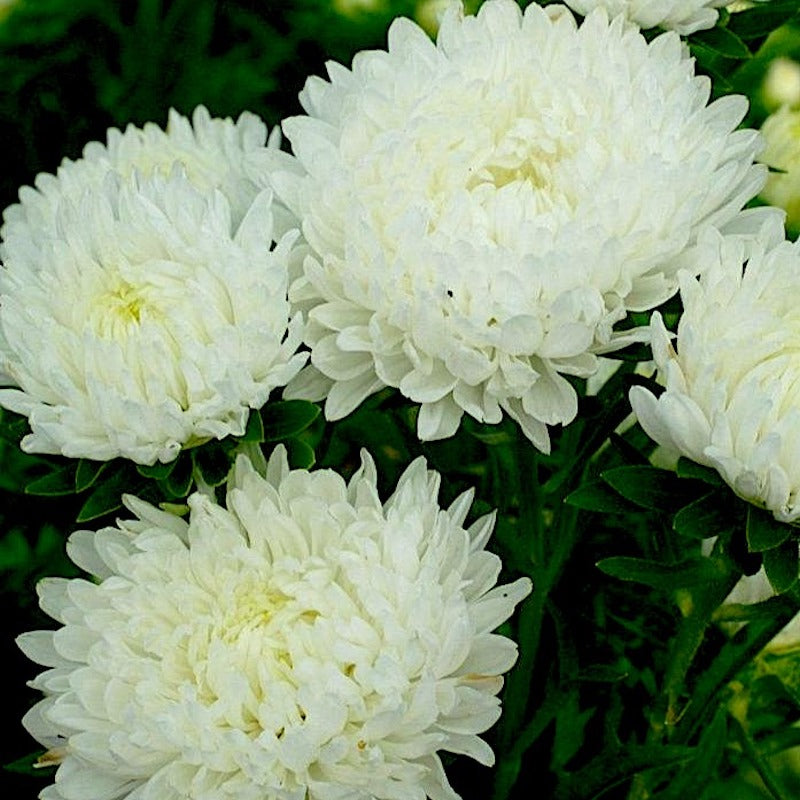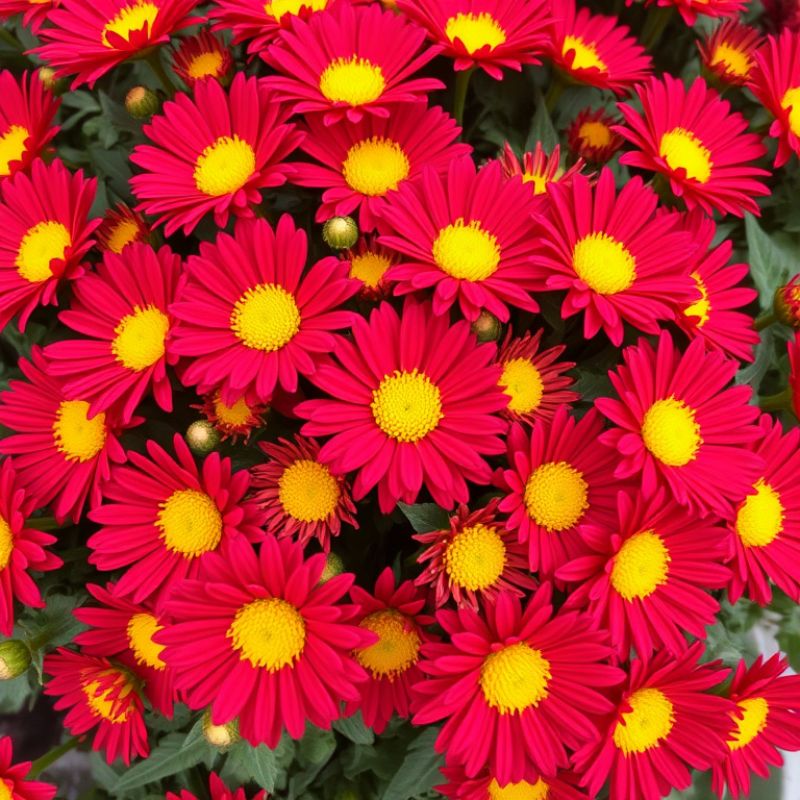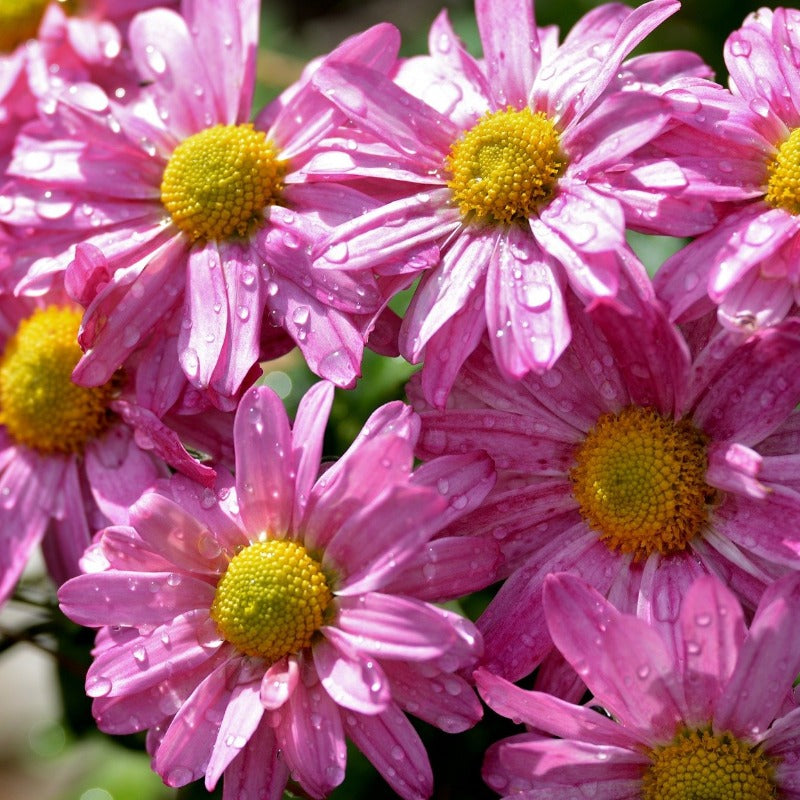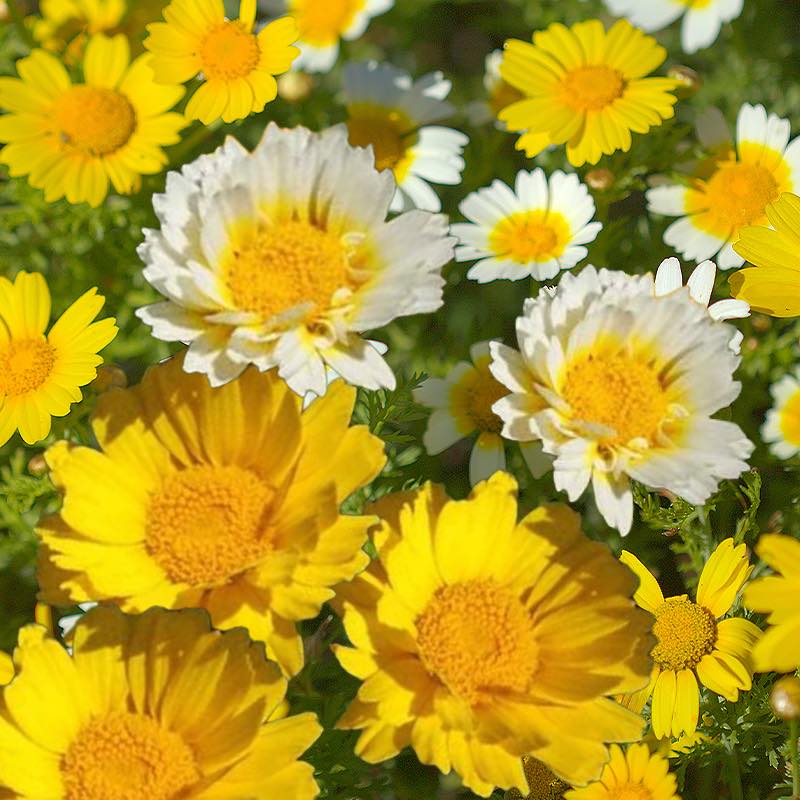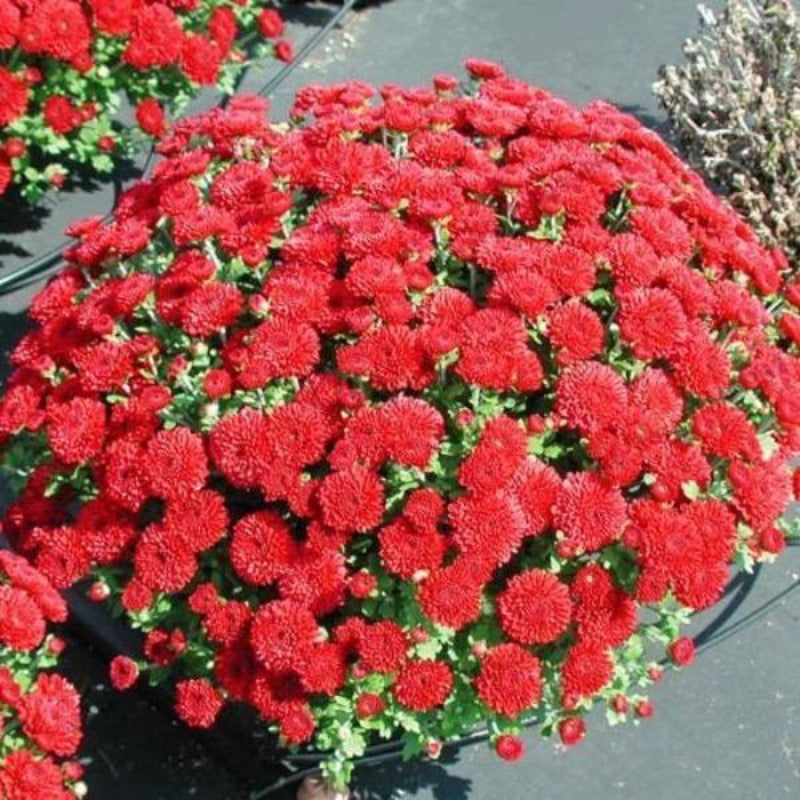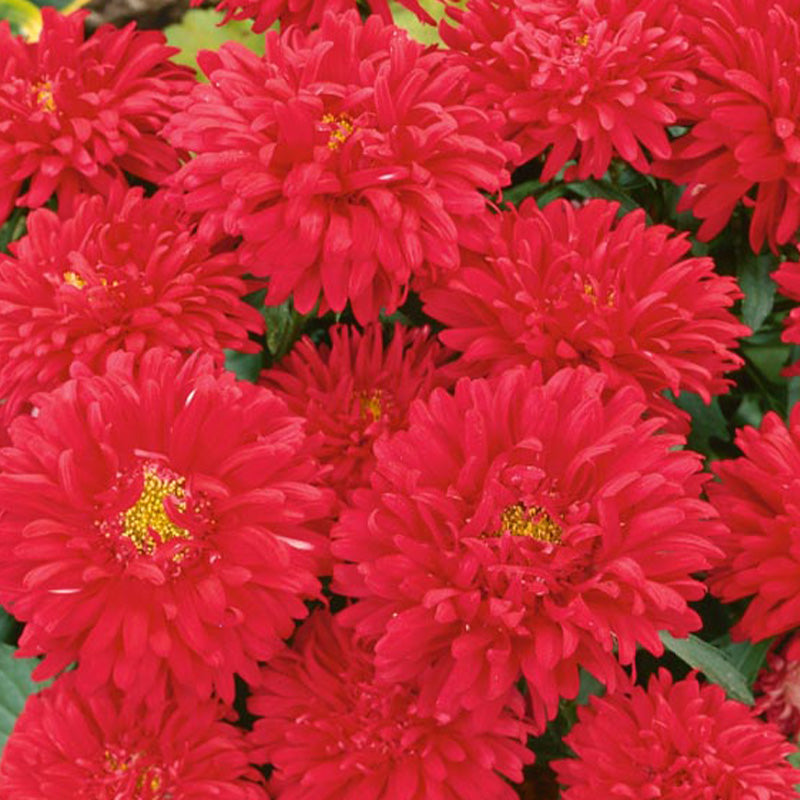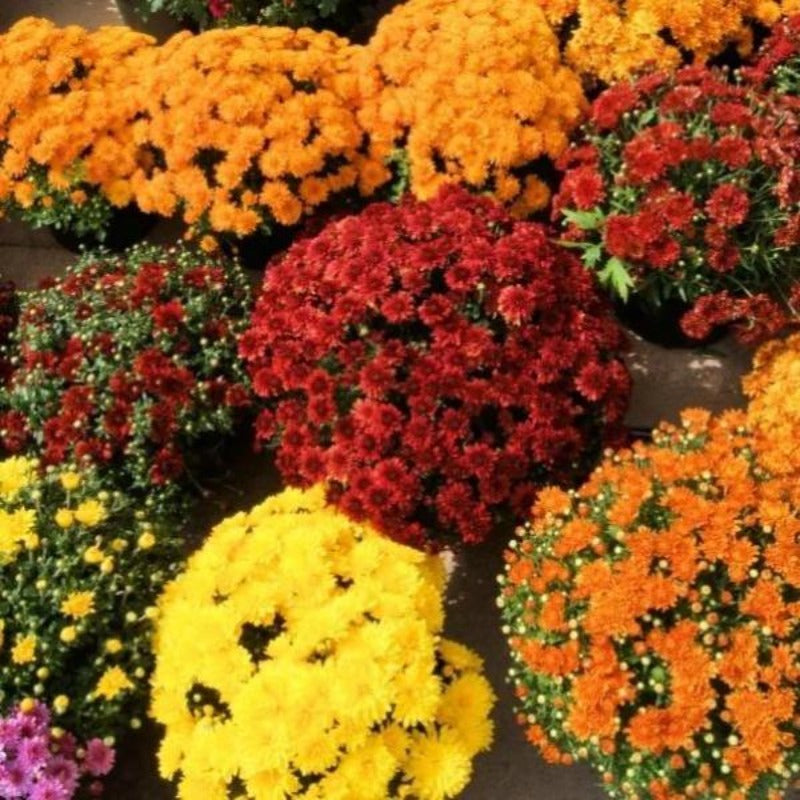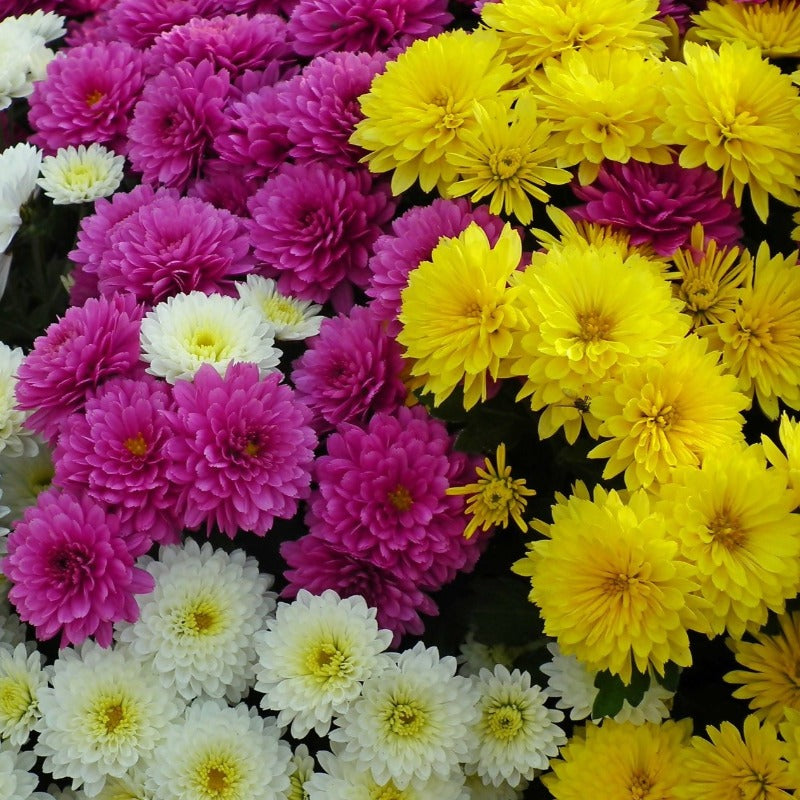Gardening Plants And Flowers
Chrysanthemum Seeds 100 PCS
Chrysanthemum Seeds 100 PCS
Couldn't load pickup availability
Varieties: Chrysanthemums and Asters
Full-bloom Period: Late summer to frost
HOW TO PLANT CHRYSANTHEMUMS FROM SEEDS
Chrysanthemum may be grown from seed sown early indoors and transplanted outside after frost, or sown directly in the garden in summer, or grown from potted plants.
Chrysanthemum seeds need up to 16 weeks to flower when grown from seed.
SOWING SEED INDOORS
- Sow chrysanthemum seeds indoors 2 months before the last spring frost date, using a seed starting kit.
- Cover the seeds lightly with 1/8 inch of seed starting mix.
- Keep the soil moist at 70-75 degrees F.
- Seedlings emerge in 10-21 days.
- As soon as seedlings emerge, provide plenty of light on a sunny windowsill or grow seedlings 3-4 inches beneath fluorescent plant lights turned on 16 hours per day, off for 8 hours at night. Raise the lights as the plants grow taller. Incandescent bulbs will not work for this process because they will get too hot. Most plants require a dark period to grow, do not leave lights on for 24 hours.
- Seedlings do not need much fertilizer, feed when they are 3-4 weeks old using a starter solution (half strength of a complete indoor houseplant food) according to manufacturer’s directions.
- If you are growing in small cells, you may need to transplant the seedlings to 3 or 4 inch pots when seedlings have at least 2 pairs of true leaves before transplanting to the garden so they have enough room to develop strong roots.
- Before planting in the garden, seedling plants need to be “hardened off”. Accustom young plants to outdoor conditions by moving them to a sheltered place outside for a week. Be sure to protect them from wind and hot sun at first. If frost threatens at night, cover or bring containers indoors, then take them out again in the morning. This hardening off process toughens the plant’s cell structure and reduces transplant shock and scalding.
SOWING DIRECTLY IN THE GARDEN:
- Direct sow after all danger of frost.
- Remove weeds and work organic matter into the top 6-8 inches of soil; then level and smooth.
- Sow seeds evenly and cover with 1/8 inches of fine soil.
- Firm the soil lightly and keep it evenly moist.
- Seedlings will emerge in 10-21 days.
PLANTING IN THE GARDEN:
- Select a location in full sun with good rich, moist organic soil.
- Prepare the bed by turning the soil under to a depth of 6-12, inches, removing any debris, and lightly raking as level as possible.
- The addition of organic matter (leaf mold, compost, well-rotted manure) benefits all gardens and is essential in recently constructed neighborhoods.
- Plant on a cloudy day or in late afternoon to reduce transplant shock.
- Dig a hole for each plant large enough to amply accommodate the root ball.
- Remove from the pot the plant and gently loosen the root ball with your hands to encourage good root growth.
- Place the top of the root ball even with the level of the surrounding soil. Fill with soil to the top of the root ball. Press soil down firmly with your hand.
- Use the plant tag as a location marker.
- Thoroughly water and apply a light mulch layer on top of the soil (1-2 inches) to conserve water and reduce weeds.
HOW TO GROW:
- Keep weeds under control during the growing season. Weeds compete with plants for water, space and nutrients, so control them by either cultivating often or use a mulch to prevent their germination.
- Mulches also help retain soil moisture and maintain even soil temperatures. For perennials, an organic mulch of aged bark or shredded leaves lends a natural look to the bed and will improve the soil as it breaks down in time. Always keep mulches off a plant’s stems to prevent possible rot.
- Careful watering is essential in getting perennials off to a good start. Water thoroughly at least once a week to help new roots grow down deep. Soil should be damp at about 1 inch below the soil surface. You can check this by sticking your finger in the soil. Water early in the morning to give all leaves enough time to dry. One inch of rain or watering per week is recommended for most perennial plants. You can check to see if you need to add water by using a rain gauge.
- Until plants become established, some protection from extreme winds and direct, hot sunlight may be necessary. Good air movement is also important.
- After new growth appears, a light fertilizer may be applied. Keep granular fertilizers away from the plant crown and foliage to avoid burn injury. Use low rates of a slow release fertilizer, as higher rates may encourage root rots.
- Chrysanthemums may benefit from being pinched up until the Fourth of July. This should make the plants bushier, and will not prevent blooming as chrysanthemums bloom when the days begin to grow shorter, in the fall.
- “Deadhead”, remove spent flower heads to encourage continuous flowering and prevent seed development.
- Remove and discard foliage after a hard frost in fall.
- In colder regions, apply another layer of mulch (1-2 inches) after the ground freezes in the fall. Evergreen boughs (from Christmas trees) provide additional protection. Remove this mulch in the spring.
- Divide perennials when plants become overcrowded, bloom size begins to diminish or plants lose their vigor. Divide chrysanthemums in spring, just as they begin to grow. Dig clumps from the ground and with a sharp knife or spade, cut into good sized divisions, each with several growing eyes and plenty of roots. Remove any dead or unhealthy plant parts and cut back stems. Replant one division where the plant was originally and plant the extra divisions elsewhere in your garden or give them away to gardening friends. Plant the divisions immediately, or as soon as possible, and water well.
- Chrysanthemums may also be propagated from cuttings taken in spring.
GROWING TIPS:
- Many gardeners do not cut back perennial flower seed heads in the fall, but wait until early spring before the new foliage appears. This provides food for wildlife over the winter.
- Chrysanthemums make great long lasting, fragrant cut flowers.
Package includes: Chrysanthemum 100 seeds of your choice.
SHIPPING INFORMATION
Processing time 2-5 business days.
Estimated delivery time 3-9 days (depending on your location).
Shipping & Returns
Shipping & Returns
Seeds ship within US only due to the nature of the product. Gardening tools and other items can be shipped internationally.
Customers can make changes to the shipping address, product, variant or cancel the order until 12pm the next day, after placing the order.
If the order has entered the shipping process or the package is already in USPS possession, moving within the network, we cannot make any changes anymore.
How long does it take to receive my product?
The estimated delivery time is mentioned on each product page.
The processing time for orders is 2-5 business days. However, we strive to expedite this process and aim to ship out your order the next business day after it is placed.
The Standard Shipping takes 3-9 days, depending on your location.
We ship out SEEDS every Tuesday and Friday.
Thank you for your patience!
Delivery Guarantee
While we make every effort to ensure the accuracy of all information, we reserve the right to make corrections if an error does occur.
Please check your shipping address carefully!
We guarantee delivery only to the addresses we are given. Postal and delivery services will not forward. If you, the customer provided an incorrect or incomplete address, then there is no re-delivery service for your order and no refund.
Gardening Plants And Flowers ships to most countries worldwide via EMS, USPS or DHL e-commerce for all domestic and international packages.
Under normal conditions, in all other months of the year, the processing time for orders is 2-5 business days.
After that, the estimated delivery time is 3-9 days within US and 2-6 weeks internationally.
However, during holidays, special conditions or limited edition launches, this time may vary.
Once an item leaves our warehouse and is handed to the carrier, the shipping process is the responsibility of the carrier.
While we do have access to tracking systems which can provide information, once a package is in the carrier network, we are unable to fulfill requests such as redirecting packages or recalling packages, and we will look to resolve shipping issues in other ways.
If an order has been shipped and the tracking has not been updated 30 days from the date shipped, you may contact Support for further investigation.
Shipping & Handling Charges are as follows:
For Seeds there is a Flat Rate shipping fee for all domestic orders (within United States territory). This means, it doesn’t matter how many seed items you add to cart, you'll pay the same shipping fee.
For Gardening Tools and Other products the shipping fee is calculated at the checkout page for all domestic and international orders (free shipping over $75).
Your order may arrive in separate packages.
Orders can be tracked at:
https://gardening-plant.com/apps/trackx
We are not responsible for any shipping deliveries that may be affected by customs, natural occurrences, transfers from EMS, DHL, USPS to the local carrier in your country or air and ground transportation strikes or delays, nor any extra fees, customs or back end charges once the package has exited the United States.
Packages undeliverable by EMS, DHL, USPS and/or their international shipping partners will be cancelled and refunded once received and processed at our shipping hub (other than seeds).
CANCEL ORDER
An order cannot be cancelled once it has been prepared for shipping.
REFUNDS
For all products, excluding seeds, our refund/return policy lasts 30 days. If 30 days have gone by since your purchase, unfortunately we can’t offer you a refund or exchange.
We do accept returns and exchanges for Gardening Tools and other products than seeds.
- Note: The Shipping Fee is non-refundable
- Note: We do not provide a return shipping label.
For Seeds we do not accept returns, exchanges or refunds; All sales are final.
We do not refund delivered packages.
However, if you did not receive your package contact us.
NOTE: In order to resend your package we need you to go to the Post Office with the tracking number and request a document that proves that your package was not processed by them.
PAYMENT INFORMATION
We accept MasterCard, Visa, American Express and PayPal.
DISCLAIMER
Seed is a live product which depends on grower skills, such as proper planting time, seed depth, type of soil, irrigation, proper use of fertilizers, weed controls, fungicides, insecticides, disease free soil, and reasonable weather conditions during the growing period. Germination is affected by factors as temperature, moisture content, light intensity and planting method. These factors are totally out of the seller's control and are the buyer's responsibility and risk. The seller cannot unconditionally guarantee seed to perform properly regardless of conditions or the buyer's methods or mistakes.
Thank You For Your Support!
Share

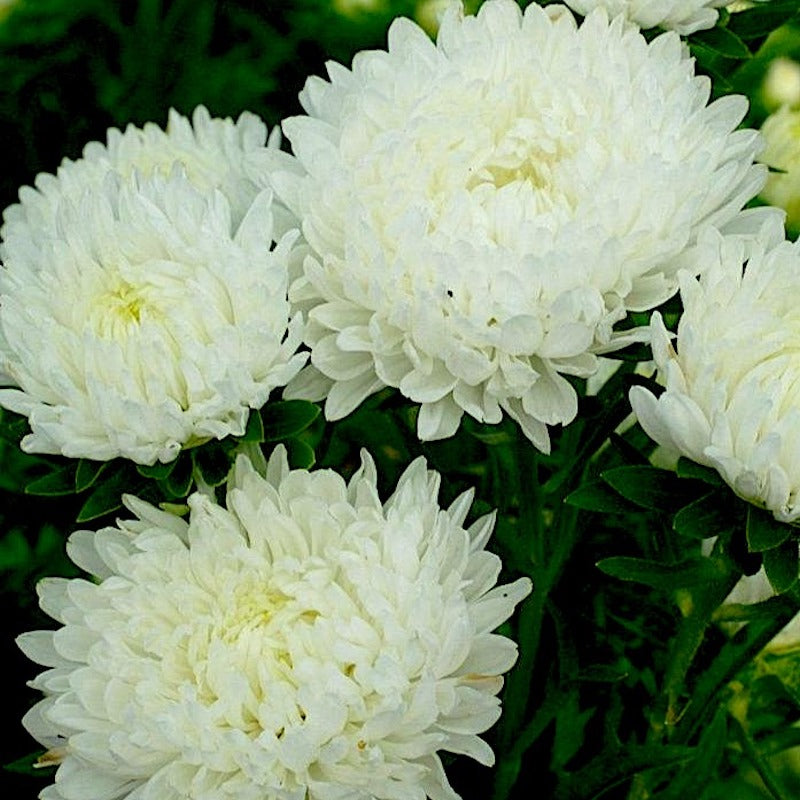

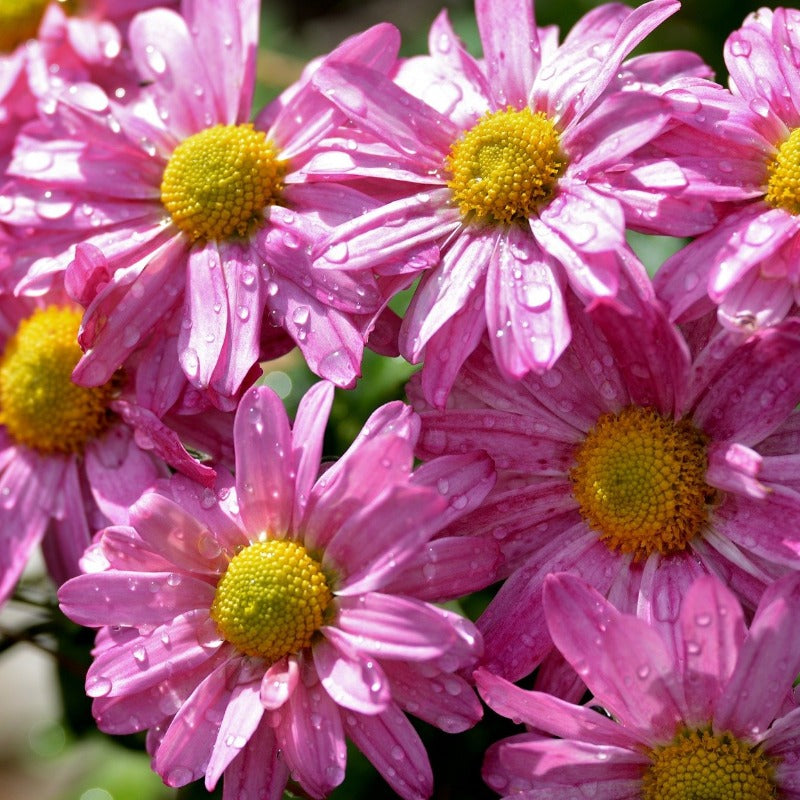


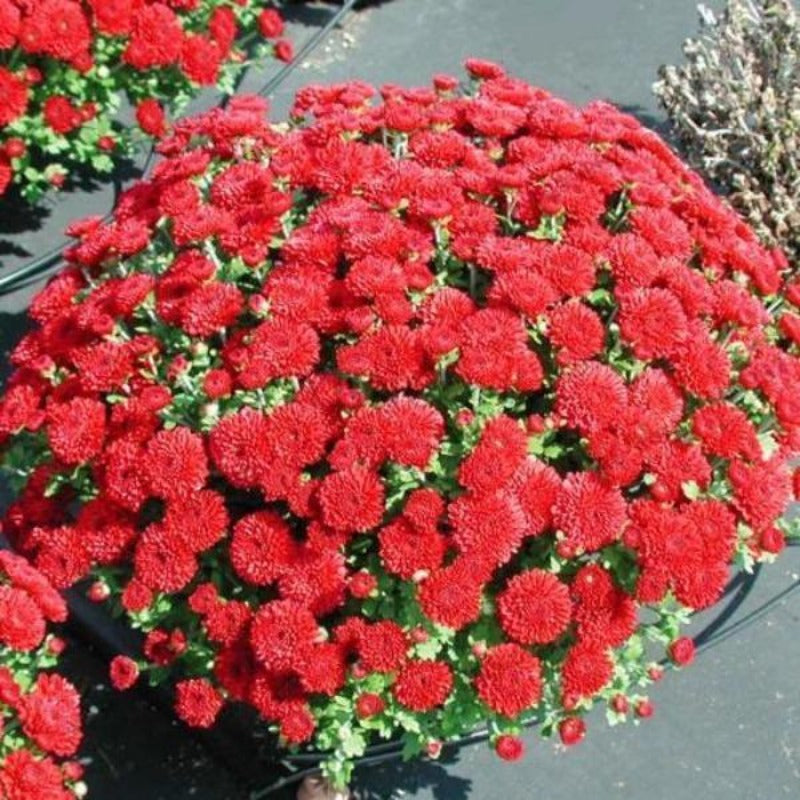
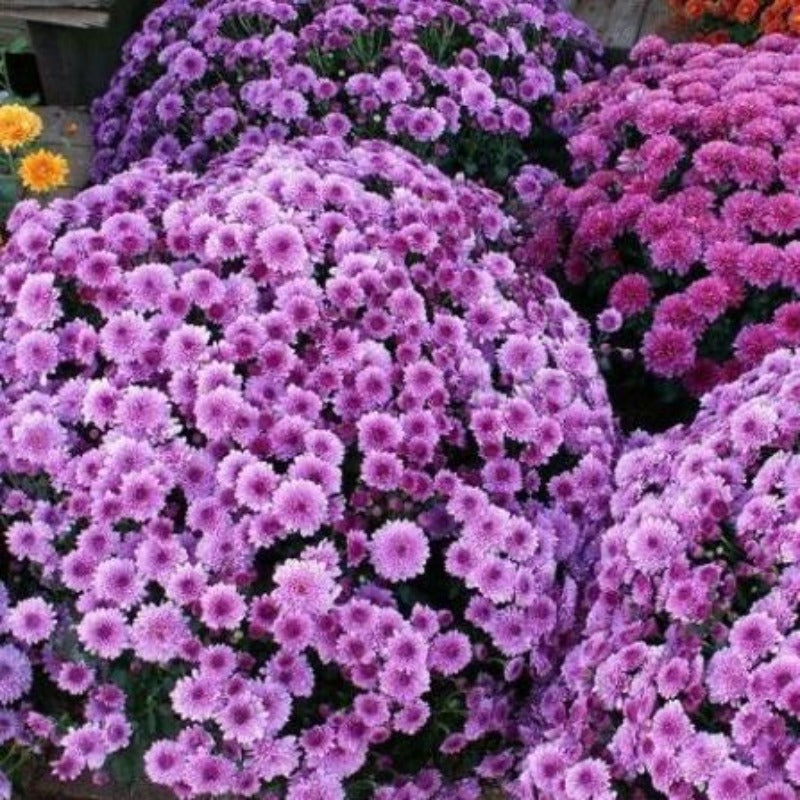
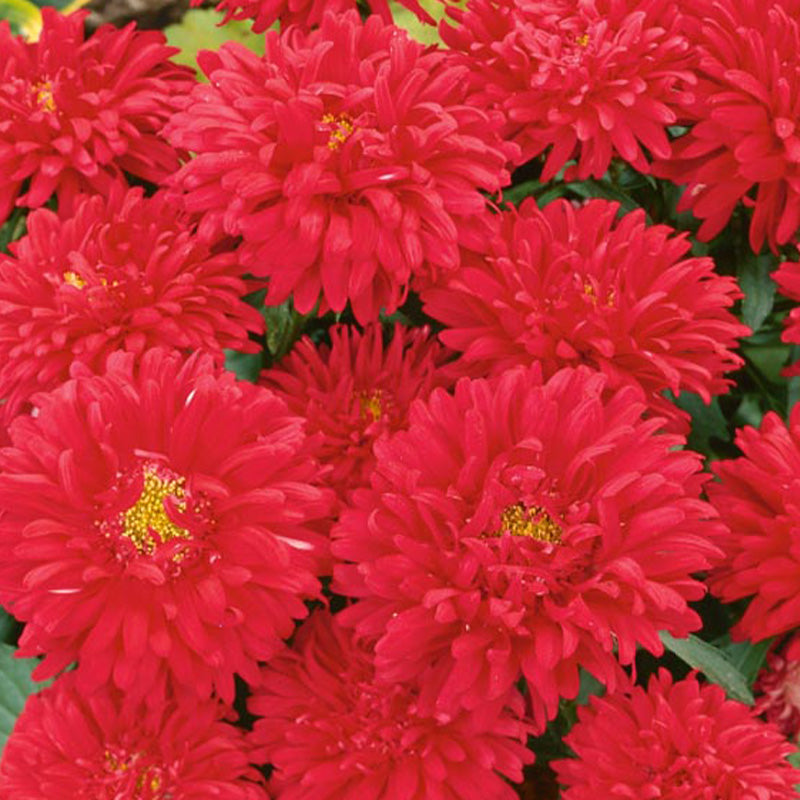
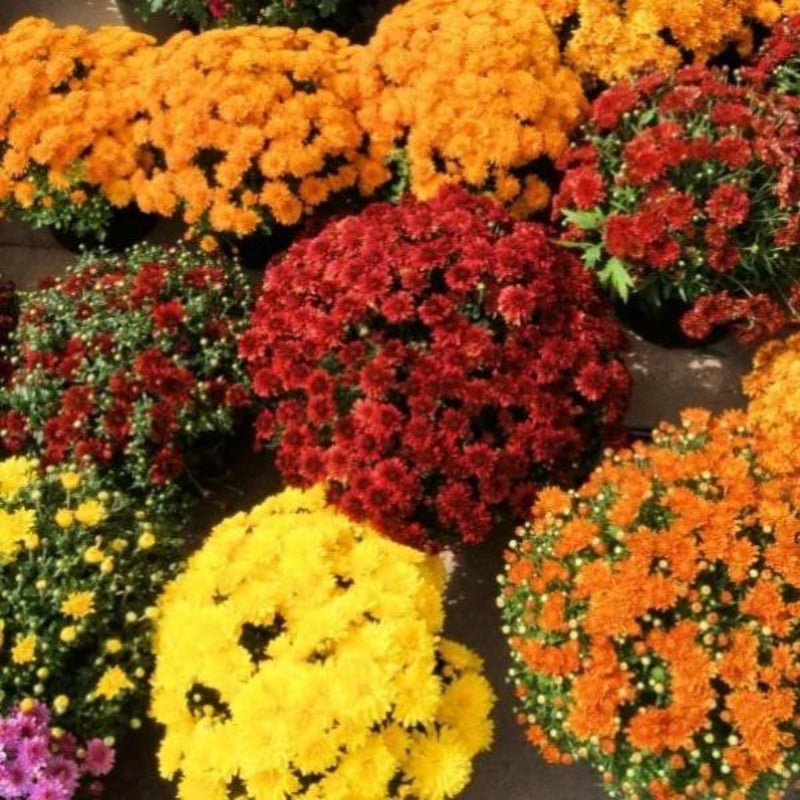
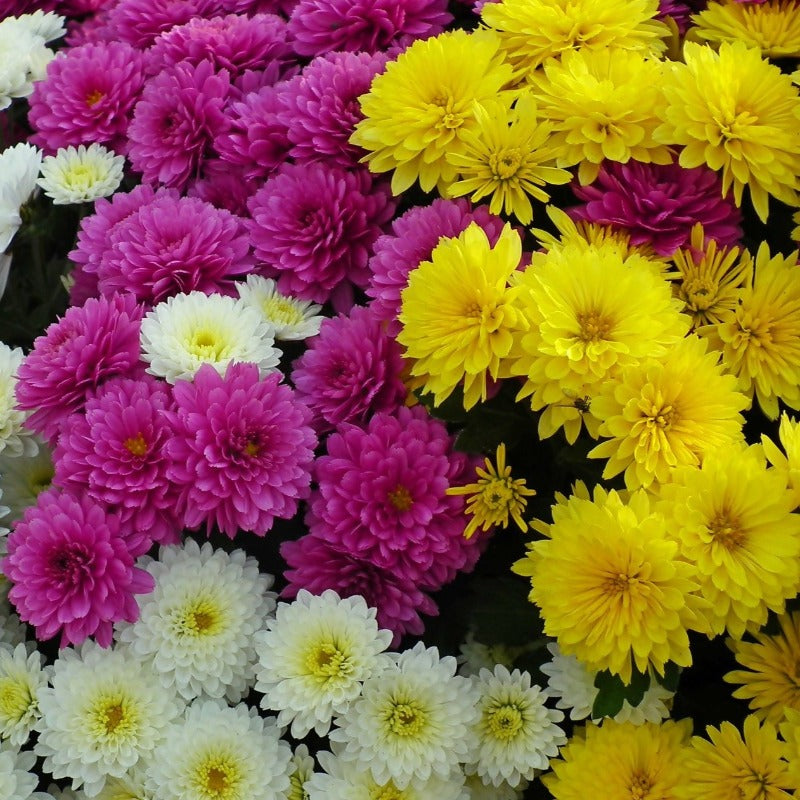
Out of 100 seeds I planted 10 and they sprouted within a week. I'm happy about that!
Still waiting to see the flowers
Great seed
Prompt delivery seeds look in good condition looking forward to getting them planted.
Love these flowers. But only half actually germinated. Maybe the rain. Washed half away


